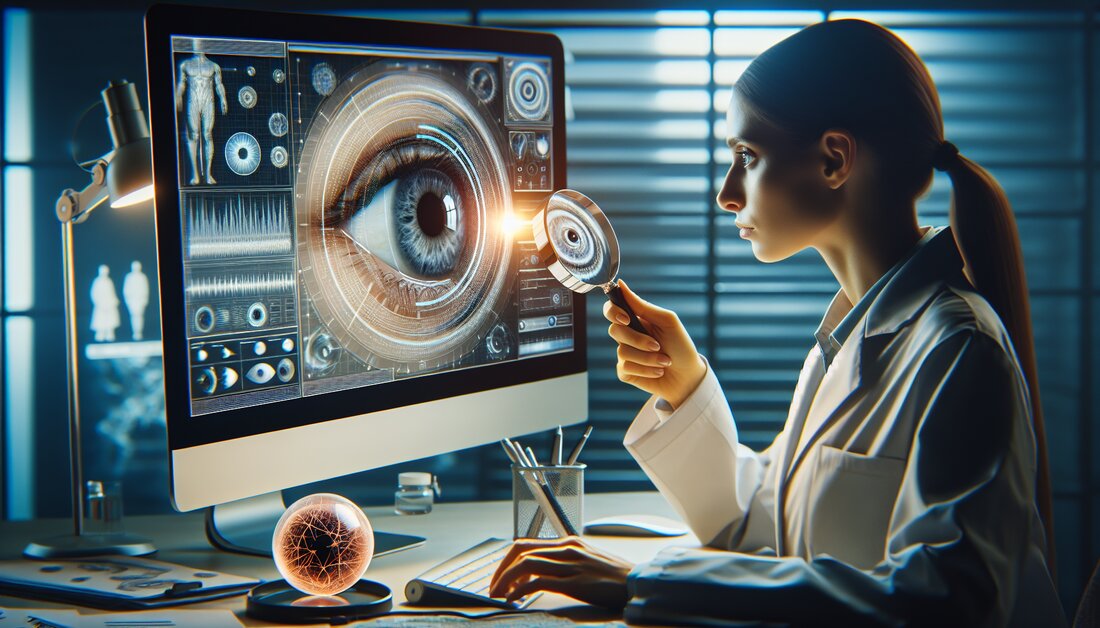Researchers want to use AI for the early detection and prognosis of dry eye disease
Learn how researchers are using AI to detect dry eye disease early and make predictions. Discover the latest advances in eye detection technology. #Research #DryEye #ArtificialIntelligence

Researchers want to use AI for the early detection and prognosis of dry eye disease
Dry eye disease (DED) is one of the most common eye diseases and affects up to 30% of the world's population. This disease can affect many different types of people and ultimately cause a major decline in their overall quality of life. Early examination and prognosis are crucial for the patient's disease progression. However, this can be difficult. In this study, researchers want to use artificial intelligence (AI) to support the early detection and prognosis of DED. The use of AI can not only make screening more accessible to individuals, but also assist patients with personalized therapeutic interventions.
The researchers published their results inBig data mining and analyticson April 22nd.
DED can affect a wide range of people, including people who wear contact lenses, wear makeup, stay up late, look at screens for long periods of time, and those over 30 years old. Symptoms of this disease include dry eyes, irritation and burning, tearing, eye fatigue and pain. One can easily see that this disease has the potential to drastically affect a large portion of the modern world population. This is where the joint efforts of eye disease detection and the world of computer scientists and engineers can help.
By overcoming challenges, conveying insights and defining future research paths, it contributes significantly to the further development of the detection of eye diseases through sophisticated technological modalities.”
Mini Han Wang, author and researcher
There are seven facets of this AI-based disease detection. Timely intervention via the AI screening process and correct prediction is the first part. The use of comprehensive dry eye surveys through AI is another consideration. This is a supporting principle to ensure a certain level of thoroughness and trustworthiness throughout the process. This is followed by a systematic approach and the combination of computer science and engineering with ophthalmology. Subsequently, standards for DED detection need to be developed and adhered to for future researchers and practitioners, which will naturally lead to advances in the field. Finally, all research results, methods and tools must be compiled so that researchers, scientists and practitioners have all currently available information at their disposal.
While ophthalmologists set the disease framework guidelines and label the diagnosis, AI does much of the heavy lifting. Ideally, this AI would use images and videos captured from a user's mobile phone to reach users around the world. The AI can then use these images as well as risk factors in the patient's life to create an intelligent and informed prognosis. Additionally, AI is continually learning and can help advance research by contributing to predictive models for DED.
The use of AI detection for dry eye disease is promising, especially considering that the risk factors are often normal activities in many people's everyday lives. In order to make the detection methods sufficiently accessible and accurate, further research needs to be carried out.
"However, there are still challenges for engineers in selecting diagnostic standards and combinations of different types of data sets. By using trustworthy algorithms as well as images and videos captured by mobile phones for accessibility, a holistic health approach to early detection is possible," he told Wang.
Through continuous testing and collaboration between engineers and ophthalmologists, there is great potential for this testing method to contribute to early detection of dry eye disease and subsequent therapeutic interventions for the patient to alleviate worsening of the condition or restore some quality of life.
Mini Han Wang and Xiangrong Yu from Zhuhai People's Hospital with Mini Han Wang also from the Department of Ophthalmology and Visual Sciences at the Chinese University of Hong Kong, the Faculty of Data Science at the City University of Macau and the Department of Big Data at the Zhuhai Institute of Advanced Technology at the Chinese Academy of Sciences Sciences, Lumin Pang, Kelvin KL Chong, Carol Yim-Lui Cheung and Xulin Liao from the Department of Ophthalmology and Visual Sciences at the Chinese University of Hong Kong, Xiaoxiao Fang with Zhuhai Aier Eye Hospital, Jie Yang from the College of Artificial Intelligence at Chongqing Industry and Trade Polytechnic, Ruoyu Zhou and Wenjian Liu with the Department of Data Science at City University of Macao, Xiaoshu Zhou with the Center for Science and Technology Exchange and Cooperation between China and Portuguese-speaking Countries, and Fengling Wang from the School of Artificial Intelligence at Hezhou University contributed to this research.
The National Natural Science Foundation of China Natural, the Shenzhen Key Laboratory of Intelligent Bioinformatics, the Shenzhen Science and Technology Program, the Guangdong Basic and Applied Basic Research Foundation, the Zhuhai Technology and Research Foundation, the Project of Humanities and Social Science of MOE, The Scientific and Technology Research Program of Chongqing Municipal Education Commission and Natural Science Foundation of Chongqing China made this research possible.
Sources:
Wang, M.H., et al. (2024) AI-Based Advanced Approaches and Dry Eye Disease Detection Based on Multi-Source Evidence: Cases, Applications, Issues, and Future Directions. Big data mining and analytics. doi.org/10.26599/BDMA.2023.9020024.

 Suche
Suche
 Mein Konto
Mein Konto